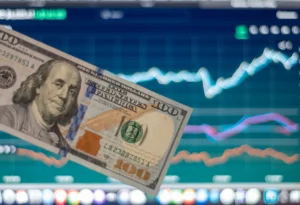Smart money trading signals have changed the way serious traders approach the financial markets. While most people focus on the main trading session, the real clues often appear in the quiet hours before the market opens and after it closes. The rise of pre-market and after-hours trading has shifted the balance of power, giving those who understand extended-hours market analysis a clear advantage. The actions of institutional order flow in these windows often reveal the most important price moves of the day before most retail traders are even awake. By learning how to spot pre-market liquidity traps and read volume profile trading, you can develop an edge that carries over into any asset class.
Trading outside of regular hours is not just about getting ahead of the crowd; it’s about seeing the footprints of those who move the market. Banks, hedge funds, and prop traders do not sleep. In fact, these big players often prefer the less crowded, thinner markets of pre-market and after-hours sessions. This is where smart money trading signals really shine, as there is less noise and more signal. Many of the biggest price swings start during these periods, powered by the same institutional order flow that later carries over into the official market open. If you want to avoid falling into pre-market liquidity traps and instead profit from them, you must become fluent in volume profile trading and recognise when smart money is taking control.
What Really Are Smart Money Trading Signals?
Smart money trading signals refer to a collection of patterns and behaviours that reveal what large institutions are doing behind the scenes. These are not just ordinary chart setups or technical indicators; they are the signs that banks, funds, and other professional traders are accumulating or distributing positions, often before the public catches on. In the pre-market and after-hours, these signals become even more critical because the lower volume and thinner order books make every institutional move easier to detect.
A classic example of a smart money trading signal is the creation of order blocks, where the price spends an extended period at a specific level as institutions quietly build a position. When you see a sudden spike in volume on almost no news, it’s often institutional order flow stepping in to claim liquidity before the market opens. Sharp reversals after a rapid move in thin trading are another telltale sign, frequently forming pre-market liquidity traps. Volume profile trading is the tool that brings these moves into focus, showing where the majority of the trading took place and revealing the price levels that matter most to the big players.
Suppose a company releases its quarterly earnings at 6:30 am, two hours before the stock market opens. The price may jump in pre-market trading, but if you look at the volume profile trading data, you might see a dense concentration of volume at the top of the move. This suggests that institutional order flow could be using the news-driven excitement to offload shares onto eager retail traders, setting up a potential pre-market liquidity trap. Once the market opens and fresh volume arrives, the price often reverses, leaving those who bought the news in pre-market with unexpected losses.
Extended Hours Market Analysis: Players and Patterns
Extended hours market analysis is all about understanding who is active before the sun rises or after the closing bell. Unlike the regular session, where millions of traders compete, the pre-market and after-hours sessions see far fewer participants. Here, the main players are institutional traders, hedge funds, and advanced algorithms that thrive in low-liquidity environments. These groups have the resources and information to react to news or global developments as they happen, long before retail traders join the game.
Liquidity during these sessions is much lower than during regular hours. A single large order can shift the market dramatically, making institutional order flow even more important. Volume profile trading shows that price can stay pinned at certain levels for extended periods, hinting at accumulation or distribution by the smart money. Economic releases, earnings announcements, and geopolitical events are often timed outside regular trading, leading to massive, fast moves as the market digests new information. For example, if a central bank surprises the world with an interest rate cut at 5 am, smart money trading signals may appear instantly as institutional order flow rushes in, pushing prices in the new direction.
In this environment, pre-market liquidity traps are common. You might see a currency pair jump sharply in the early morning hours, only for the move to completely reverse when the London or New York market opens and liquidity floods in. Extended-hours market analysis requires a careful study of volume, order flow, and context to avoid being fooled by false moves.
How Smart Money Creates and Exploits Pre-Market Liquidity Traps
Pre-market liquidity traps are designed to catch aggressive traders off guard. Institutions take advantage of thin trading to move prices quickly and trigger retail stop losses or lure traders into poor positions. The process is simple but devastating for those unaware. A large player pushes the price sharply in one direction, creating a sense of urgency. Retail traders, watching the move and fearing they will miss out, jump in. Once enough positions are built, the smart money reverses the market, and those caught in the trap are forced to sell at a loss.
Let’s take a real-world example from the stock market. Imagine a tech company announces a new product at 7 am, sending its shares soaring 10 percent in pre-market trading. The volume profile trading data shows most of the volume was concentrated near the new highs, not at the breakout. This hints at institutional order flow quietly distributing shares to retail traders. As soon as the opening bell rings and broader liquidity enters, the price drops rapidly, exposing the pre-market liquidity trap. Traders who bought late are left scrambling to exit, often at a significant loss.
Avoiding these traps requires more than just technical analysis. You need to look at the total traded volume relative to what is typical for the asset. If a move happens on very low pre-market volume, it’s often a sign that smart money trading signals are being sent to lure in the unwary. Always analyse the volume profile trading picture and ask yourself who is really behind the move and why.
Volume Profile Trading: Decoding the Institutional Blueprint
Volume profile trading is essential for anyone hoping to track smart money during extended hours. Unlike traditional charts that only show time and price, volume profile trading reveals where the bulk of trading occurs. This lets you see exactly where institutions are active and whether they are accumulating or distributing.
In pre-market and after-hours trading, the importance of volume profile trading is magnified. Thin liquidity means that large orders create visible imbalances, which appear as bulges or gaps in the volume profile. Smart money trading signals become clearer when you see repeated spikes at the same price, signalling either accumulation ahead of a big move or distribution ahead of a reversal.
Consider a case from the after-hours session in the futures market. The E-mini S&P 500 contract trades heavily around a specific price level for several hours, even though the overall volume is low. When volume profile trading shows this activity, it often means institutional order flow is quietly at work. The following day, as the regular market opens, the price moves sharply away from that level, confirming that the smart money was positioning for the next session’s move.
Institutional Order Flow: The Market’s Unseen Driver
Institutional order flow is the true driver of price action, particularly in the low-volume world of pre-market and after-hours trading. While retail traders focus on chart patterns, professional traders are analysing order flow and volume profile trading to see what the big players are up to. When you spot an unusually large trade, a sudden surge in volume, or a price movement with no apparent news, you’re likely seeing institutional order flow at work.
For example, in the currency markets, the yen might suddenly strengthen at 3 am even without an obvious headline. A closer look at volume profile trading reveals a huge volume spike at a specific level. Smart money trading signals suggest a major bank has stepped in, positioning ahead of an economic report or global market open. Retail traders who try to chase the move often get caught in a pre-market liquidity trap when the market direction reverses with the start of the European session.
Learning to read institutional order flow is about more than just spotting big trades. It’s about understanding the context, the timing, and the way volume profile trading fits into the bigger picture. This is where extended-hours market analysis gives you an edge.
Practical Pre-Market Routine
Building a routine for extended-hours market analysis is crucial if you want to trade alongside, rather than against, the smart money. Start each session by scanning the news and global economic calendar for any events that might trigger institutional order flow. Check for unusual price or volume action in your watchlist. Use volume profile trading tools to identify areas where volume is concentrated, as these are likely spots for accumulation or distribution.
As the pre-market progresses, pay special attention to how price reacts around these high-volume zones. If the price quickly reverses after touching a key level, smart money trading signals may be warning you of a trap. Stay patient and avoid jumping in just because the market is moving. Real opportunities often come when the broader market opens and liquidity returns.
Suppose you notice a popular tech stock trading in a tight range with steadily increasing volume before the open. Volume profile trading reveals most of the action is near a single price level. When the market finally opens, the price explodes in the direction of the pre-market buildup. This is a textbook example of smart money preparing for the next move, giving those who watched the signs a clear trading opportunity.
Combining Smart Money Trading Signals with Other Analytical Tools
Although smart money trading signals and volume profile trading are potent on their own, you can sharpen your strategy by integrating them with additional market analysis. Platforms that display real-time order flow or show the time-and-sales tape can help confirm when institutional order flow is stepping in. Comparing price action to the volume-weighted average price (VWAP) during pre-market or after-hours can highlight when big players are buying above or below the market average. Watching the market depth in real time reveals whether there are large, hidden orders that might be absorbing or providing liquidity.
Consider a scenario where a major stock suddenly rallies in the after-hours session on news. You check volume profile trading and spot a dense cluster of trades at the top of the range, with the price unable to break higher despite heavy buying. Smart money trading signals suggest distribution. If order flow tools confirm that most trades are happening on the ask but the price can’t advance, this signals exhaustion and potential for a sharp reversal when the market opens.
In the forex market, the same principles apply. If a pair spikes on thin liquidity in early Asia, smart money trading signals backed by volume profile trading and order flow analysis may show that the move lacks true institutional backing and is more likely a trap.
How to Avoid Common Traps in Extended Hours Trading
Mistakes in pre-market and after-hours trading are often costly because the market is less forgiving outside normal hours. The most common error is chasing price action without understanding who is really behind the move. Another frequent mistake is ignoring volume profile trading, which leaves you blind to where real institutional order flow is taking place.
Patience is the key to survival. Never assume a strong move will continue simply because it is dramatic or tied to a news event. Always check whether volume profile trading supports the move, and remember that the real market often starts with the opening bell when liquidity floods in. If you find yourself caught in a pre-market liquidity trap, be disciplined enough to cut losses quickly and study what went wrong.
Keep a detailed trading journal that tracks every extended-hours trade, the smart money trading signals you observed, and the outcome. Over time, this will help you recognise patterns and refine your approach to extended-hours market analysis.
Real-World Case Studies: Smart Money in Action
Let’s see how these concepts play out with a few real examples across different markets. During a volatile earnings season, a major retailer released its quarterly results at 5 pm, sending shares up 12 percent in after-hours trading. Volume profile trading made it obvious that institutional order flow was dominant, with most trades happening at the high end of the move. Yet, when the main session opened the next day, the price immediately reversed as retail traders chased the gap. Those who understood smart money trading signals and followed volume profile trading were able to avoid buying the top and instead faded the move for a quick profit.
In forex, a similar pattern emerged during an unexpected central bank rate announcement overnight. The euro spiked in thin Asian trading, only to fall sharply as the London session began. Volume profile trading showed the bulk of activity at the top, revealing a pre-market liquidity trap set by institutions.
Even in crypto, these dynamics matter. Bitcoin often surges late on Sunday night, drawing in eager traders, but experienced market watchers see that the real volume does not support the rally. When regular global markets open, price frequently collapses, proving the move was not supported by smart money.
Maximising Your Edge: Final Thoughts
To truly thrive as a trader, you must look where others are not. Smart money trading signals, extended hours market analysis, and volume profile trading together give you the power to spot opportunities and avoid costly mistakes. The market’s most important moves often start when the crowd is still asleep, and those who learn to track institutional order flow can position themselves early, confident in the knowledge that they are not trading alone.
Trading in pre-market and after-hours is not without risks, but it is also where the clearest smart money footprints can be found. Respect the unique challenges of thin liquidity, wider spreads, and unpredictable news, but embrace the insight that comes from understanding the market’s true drivers. With discipline, patience, and a focus on volume profile trading, you can turn extended hours into your most profitable trading window and make smart money trading signals your most trusted guide.
Read here to learn more about “ROC Indicator Tips: Smart Trading Made Easy for 2025“.

I’m Chaitali Sethi — a seasoned financial writer and strategist specializing in Forex trading, market behavior, and trader psychology. With a deep understanding of global markets and economic trends, I simplify complex financial concepts into clear, actionable insights that empower traders at every level. Whether it’s dissecting winning strategies, breaking down market sentiment, or helping traders build the right mindset, my content bridges the gap between information and implementation.




